I love lentils. They’re highly nutritious, inexpensive, environmentally friendly, and come in a range of colors and textures. All that, and they can be truly delicious—if you know how to cook them properly. This lentil recipe yields perfectly cooked lentils, every time.
Lentils are one of my favorite plant-based sources of protein, right up there with their legume cousins, black beans and chickpeas. The beauty of lentils is that they don’t take long to cook (around 20 minutes or so), whereas beans require a couple of hours on the stove. Since I’m generally in a hurry before dinner, their quick cook time is a big selling point.
If you’re trying to eat better, just add more lentils. They’re great in salads, soups (this lentil soup is famous), side dishes, and even with pasta. Lentils continue to soak up nearby flavors as they rest, so they typically make great leftovers.
Since I have so many recipes with lentils on the blog, I wanted to share a primer on how to cook lentils. I’ve been tweaking my technique over the years, and I think you’ll appreciate this method. Here we go!
How to Cook Lentils
My technique is a little different than the recipes you’ll find on the back of the packages. It’s quicker, and I hope you’ll agree that it’s even better!
1) Bring a pot of water to boil.
Fill it with plenty of water, but leave room at the top for the water to come to a boil, and some extra space to accommodate the lentils.
2) Meanwhile, sift through your lentils.
You might be wondering—do I really have to do that? Yes, yes, you do. I skipped this step once, and bit right into a small rock. It was jarring, and I’m lucky I didn’t chip my tooth.
How to sift through your lentils: Just pour them, very slowly, into a fine-mesh sieve (affiliate link), looking carefully for anything that looks funny. For good measure, sift through with your fingers afterward. Then, rinse your lentils in the sieve to remove any dust.
3) Once the water is boiling, add the lentils.
Reduce the heat as necessary to maintain a lively simmer. No need to cover the pot—I like to keep an eye on them.
4) Add some flavor boosters, if you’d like.
Add some salt, maybe a bay leaf, and maybe a clove of garlic (peeled but left whole). Some recipes will warn you to never add salt to beans or lentils while they’re cooking (they say it’ll prevent them from cooking through), but it’s simply not true! Salt brings out their best.
5) Cook until you reach your desired consistency.
The amount of time your lentils need to cook will vary depending on their variety and their age. I’ve provided some starting points for each variety in the recipe below. You’ll need to test them for doneness when the timer goes off—if they’re not quite done, give them another minute before retesting, or they’re definitely not done, give them a couple of minutes before trying again. Remember, lentils cook quickly.
6) Strain off the excess water.
We’ve cooked our lentils in an abundance of water, so now you’ll want to pour the mixture through your fine-mesh strainer to get rid of the excess. Return your lentils to the pot, this time off the heat, and remove the bay leaf if you added one. If you added a clove of garlic, smash it against the side of the pan and stir it in. Season with another pinch of salt or two, as needed. Your lentils are ready to go!
Watch How to Cook Lentils
Types of Lentils
1) Basic Lentils (Brown/Green Lentils)
Call them basic, standard, brown or green or greenish-brown—we’re talking about the most common lentil (pictured above). This variety of lentil is also the most affordable, and lucky for us, it’s tasty and versatile.
These lentils are flatter and a little wider than the two fancy varieties below. You can substitute basic lentils for French green or black beluga lentils if you are careful to cook them until tender. If you overcook them, they can become quite mushy.
If you land somewhere safely in between al dente and mush, brown lentils ease right into sauces and soups. You’ll find these lentils in my best lentil soup—they contain enough starch to turn super creamy, especially after blending a portion and pouring it back in. They’re also surprisingly delicious with marinara, as a substitute for ground beef—see my lentil baked ziti and lentil and mushroom “meatballs” as proof.
You can even cook this variety with brown rice in the same pot if you follow the instructions in my mujadara recipe. If you’re looking to change up your bean tacos, try substituting lentils, like I did with these roasted cauliflower tacos with creamy chipotle sauce.
2) French Green Lentils (Lentilles du Puy)
French green lentils are smaller and rounder than standard brown lentils. They’re mottled with dark gray and almost look like tiny turtle shells, if you use your imagination. Lentilles du Puy are proprietary to the Auvergne region in central France. They get their nutty, mineral-rich flavor from growing up near mountains and volcanic deposits. Similar green lentils grow in Idaho, and they’re supposedly almost as good.
I generally reserve French green lentils for applications that allow the lentil’s distinct shape and texture to shine. In my lentil and couscous stuffed peppers recipe, for example, the round, tender French green lentils contrast with the tiny, fluffy grains of couscous. Like brown lentils, earthy French green lentils are also nice with marinara, as seen in my hearty spaghetti recipe.
I use French green lentils and black beluga lentils almost interchangeably in salads, given their similar shapes and textures. You could use French green lentils in my recipes for roasted broccoli, arugula and lentil salad or lentil and chickpea salad with radish and herbs.
3) Black Lentils (Beluga Lentils)
Black lentils could almost pass as caviar (that’s why they’re also called “beluga” lentils). Like black beans, black lentils are actually so dark blue that they appear black. That’s a clue that they’re really good for you—black beans, lentils and blueberries all get their color from powerful antioxidants called anthocyanins.
Black lentils are similar to French green lentils in size, shape and texture, but have a more mild flavor. Black lentils are featured in my recipes for Greek lentil salad, lemony roasted broccoli, arugula and lentil salad or lemony lentil and chickpea salad with radish and herbs. The titles gave it away, but black lentils are especially nice with lemon, fresh greens and tender herbs.
Black lentils also work well with bold spices and Indian flavors. Check out this masala lentil salad with cumin roasted carrots and my shortcut version of dal makhani, which traditionally calls for whole black lentils (urad dal).
4) Red Lentils (Masoor Dal)
Red lentils, also called pink lentils, are a different ball game. They cook even more quickly because they’ve already had their fibrous skins removed, and they’ve been split open. These lentils turn soft and mushy before you know it, which is why they’re ideal for soups and stews. You’ll find them used in Indian, Middle Eastern and Mediterranean recipes.
May the record show that you don’t have to cook them until they’ve completely disintegrated. The recipe below provides cook times to achieve the results you see above. Check out my curried red lentil soup to see how lovely they can be when they’ve been cooked longer. You’ll notice that they turned a more golden color as they cook.
You’ll find the recipe to cook any variety of lentils below! Please let me know how this technique works for you in the comments. I’d also love to hear how you enjoy your lentils!
How to Cook Lentils
- Author:
- Prep Time: 5 minutes
- Cook Time: 15 minutes
- Total Time: 20 minutes
- Yield: 3 cups 1x
- Category: Basic
- Method: Stovetop
- Cuisine: Mediterranean
Learn how to cook perfectly tender lentils, every time, with this foolproof recipe. Lentil cook times vary by variety and age—you’ll find starting points and guidance in the instructions. One cup dry lentils yields about 3 cups cooked, so multiply as necessary.
Ingredients
- 1 cup dry lentils (any variety)
- ½ teaspoon salt, to taste
- Optional flavor enhancers: 1 bay leaf and/or 1 large clove garlic (peeled but left whole) and/or 1 to 2 teaspoons extra-virgin olive oil
Instructions
- Fill a medium-to-large saucepan with water, leaving several inches of room at the top. Bring it to a boil over high heat.
- Meanwhile, sort through your lentils for debris. I do this by slowly pouring the lentils into a fine-mesh sieve, keeping a careful eye out for any tiny rocks or extraneous materials. Sift through the lentils with your fingers to make sure you didn’t miss anything. Then, rinse your lentils under running water until the water runs clear. Set aside.
- Once the water is boiling, add the rinsed lentils. Add the salt, and the bay leaf and/or garlic, if using.
- If you’re cooking red lentils, set the timer for 6 minutes. For regular green lentils, set the timer for 13 minutes. For black lentils, set the timer for 16 minutes. For French green lentils, set the timer for 18 minutes.
- Meanwhile, reduce the heat as necessary to prevent overflow and to maintain a lively simmer. Once your timer has gone off, use a fork to scoop out a few lentils and test for doneness (careful, they’re hot). Your lentils are done when they are pleasantly tender throughout (not mushy or falling apart) and taste nicely earthy (undercooked lentils tend to taste somewhat metallic). If your lentils aren’t fully cooked yet, retest every 1 to 2 minutes until they are.
- Once cooked, immediately strain off all the excess water. Pour the lentils back into your pot, off the heat. If you added a bay leaf, discard it now. If you added a garlic clove, use a fork to smash it against the side of the pot, then stir it into the lentils.
- Taste, and add a pinch or two of salt if necessary. If you’re using these lentils as a component in another recipe, they’re ready to go. If you’re serving them on their own or as an element in a salad, you might want to stir in 1 to 2 teaspoons olive oil to prevent sticking and add some luxurious flavor. Enjoy.
Notes
Storage suggestions: Leftover lentils will keep well in the refrigerator, covered, for 4 to 5 days. For longer storage, freeze leftover lentils for up to 6 months. Since lentils are somewhat delicate, it’s best to defrost them in the refrigerator. If you’re in a hurry you can gently microwave them, stirring often.
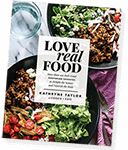
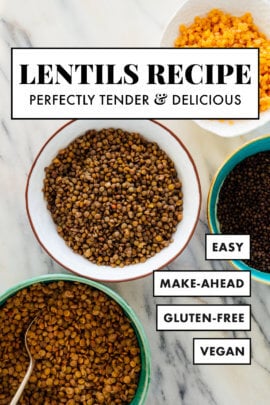


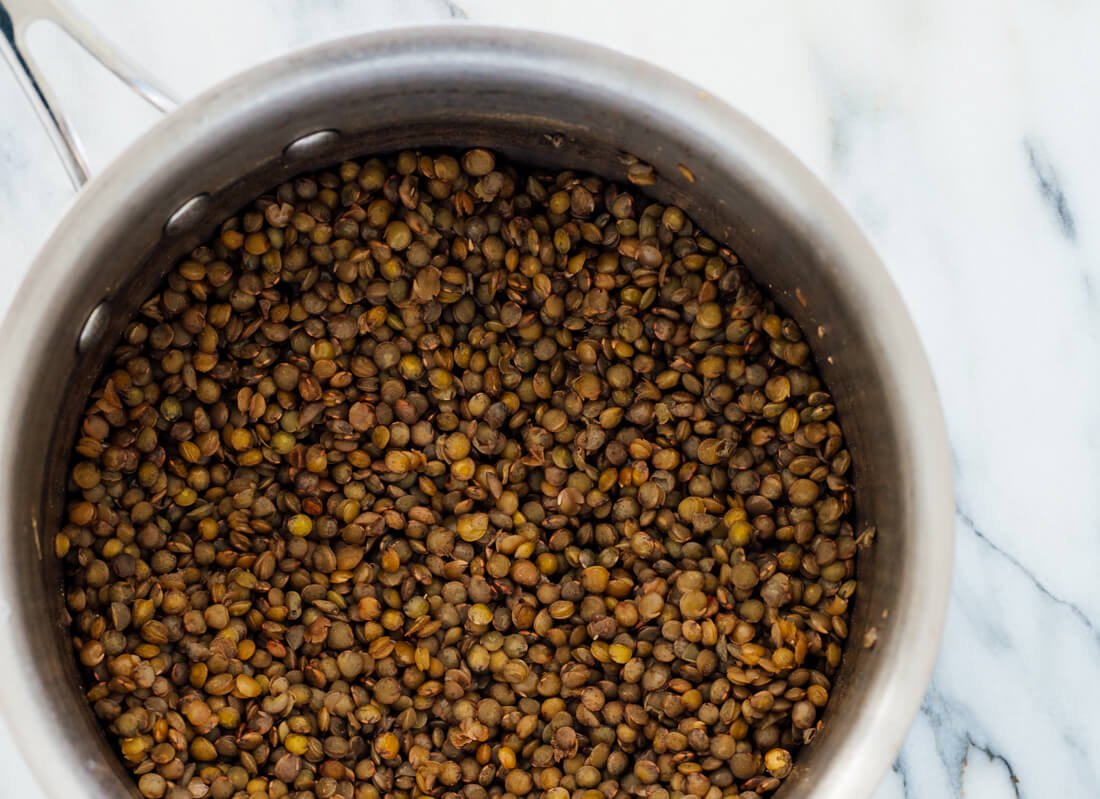
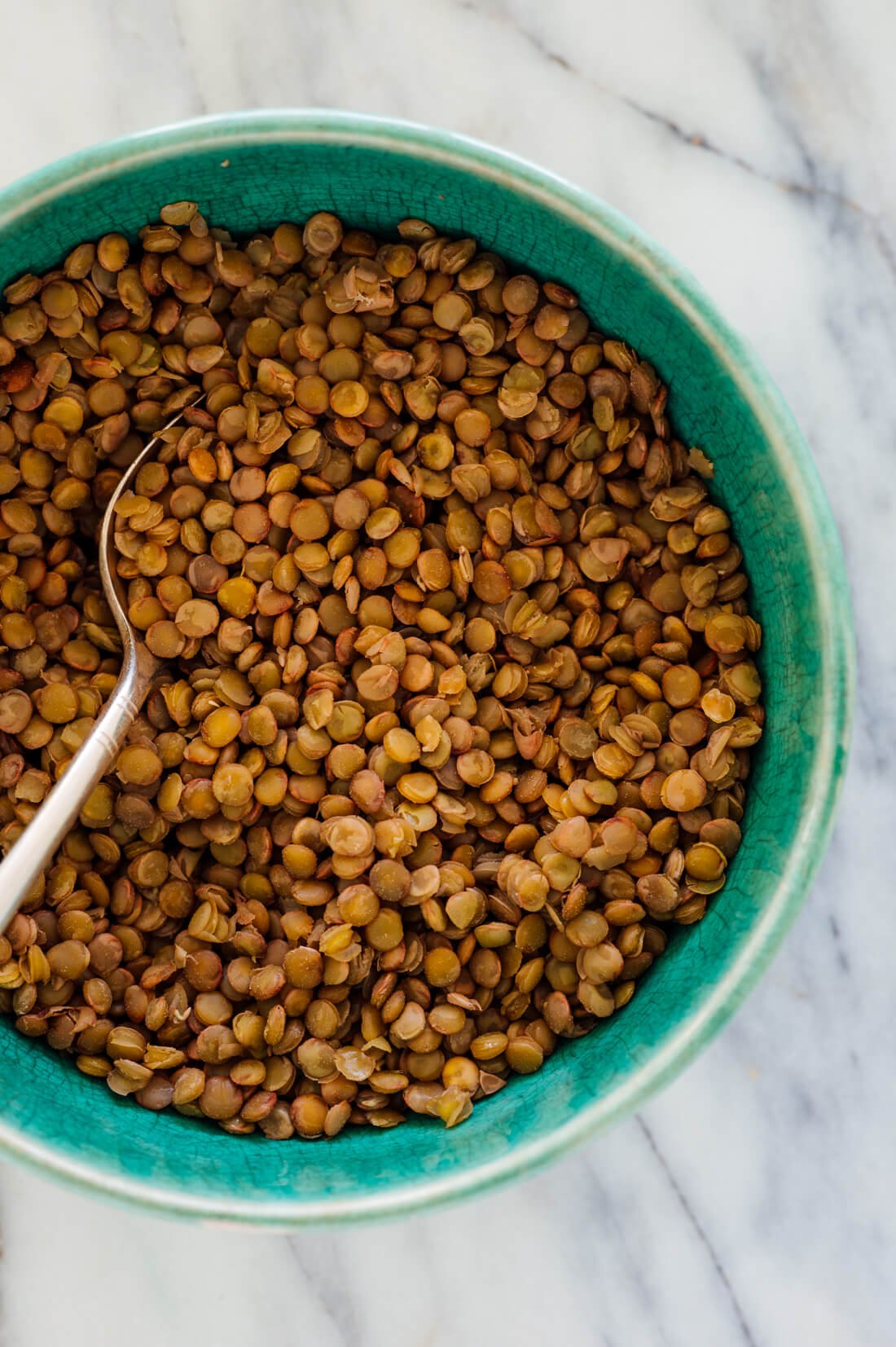
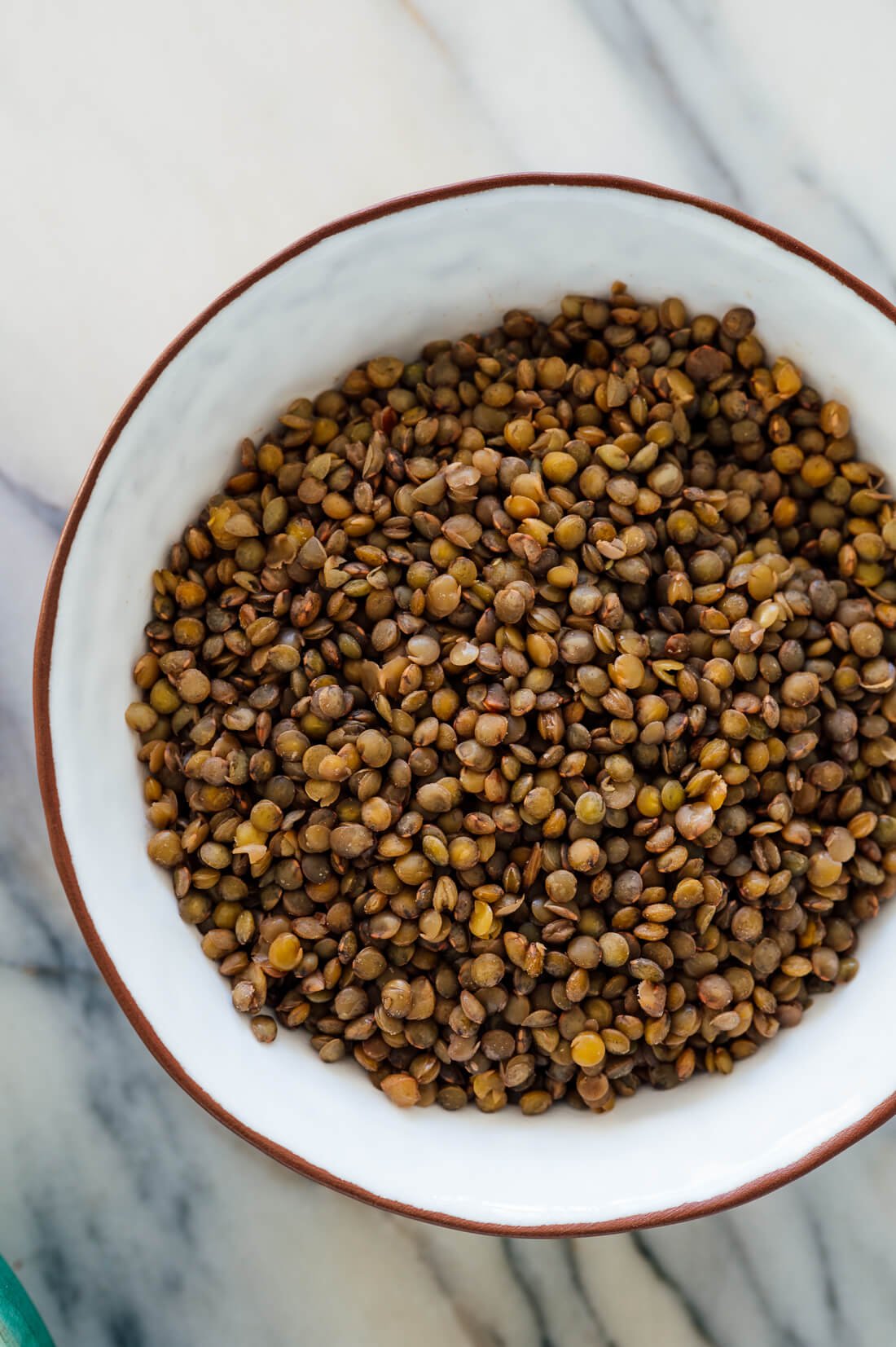
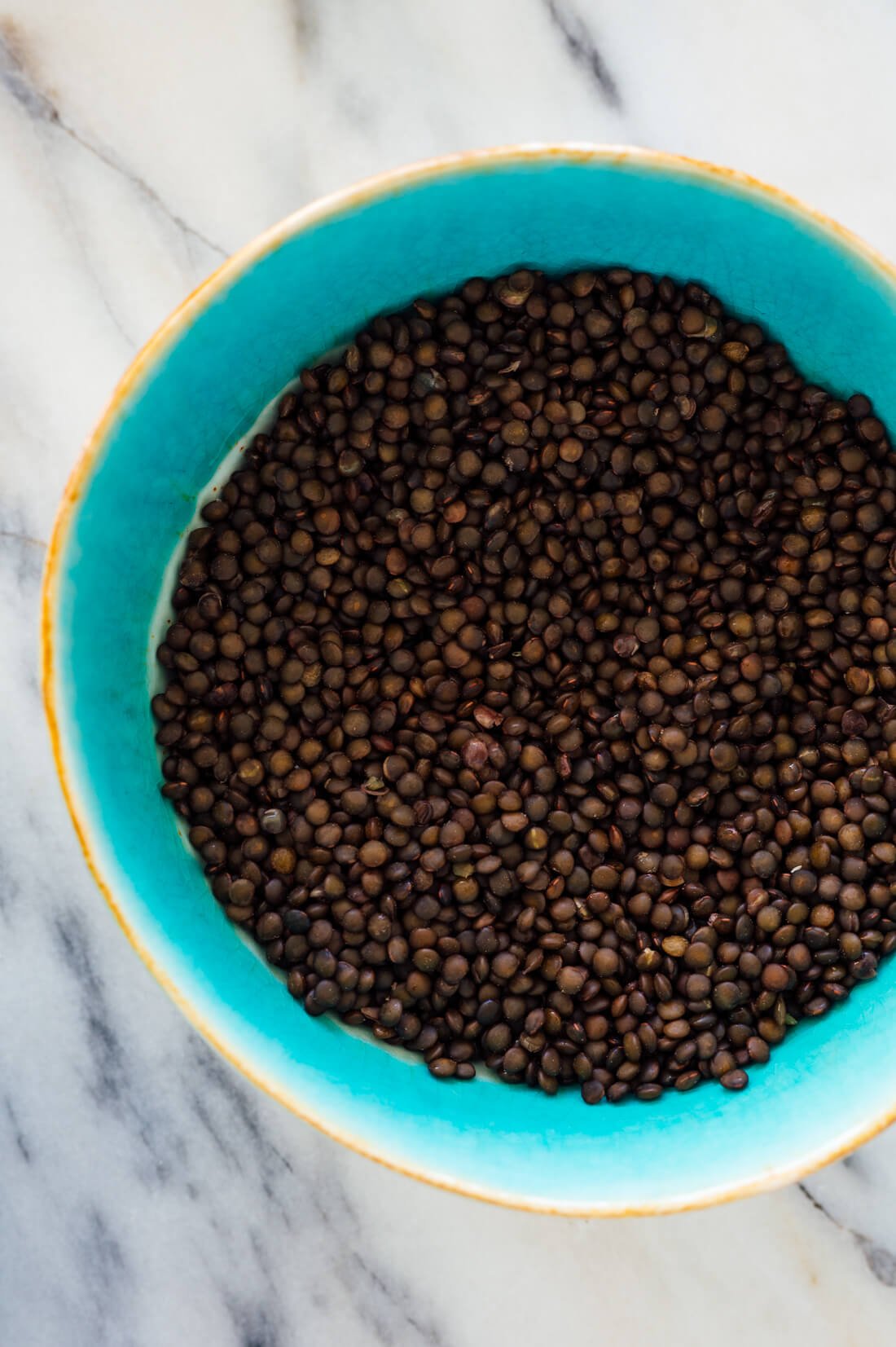
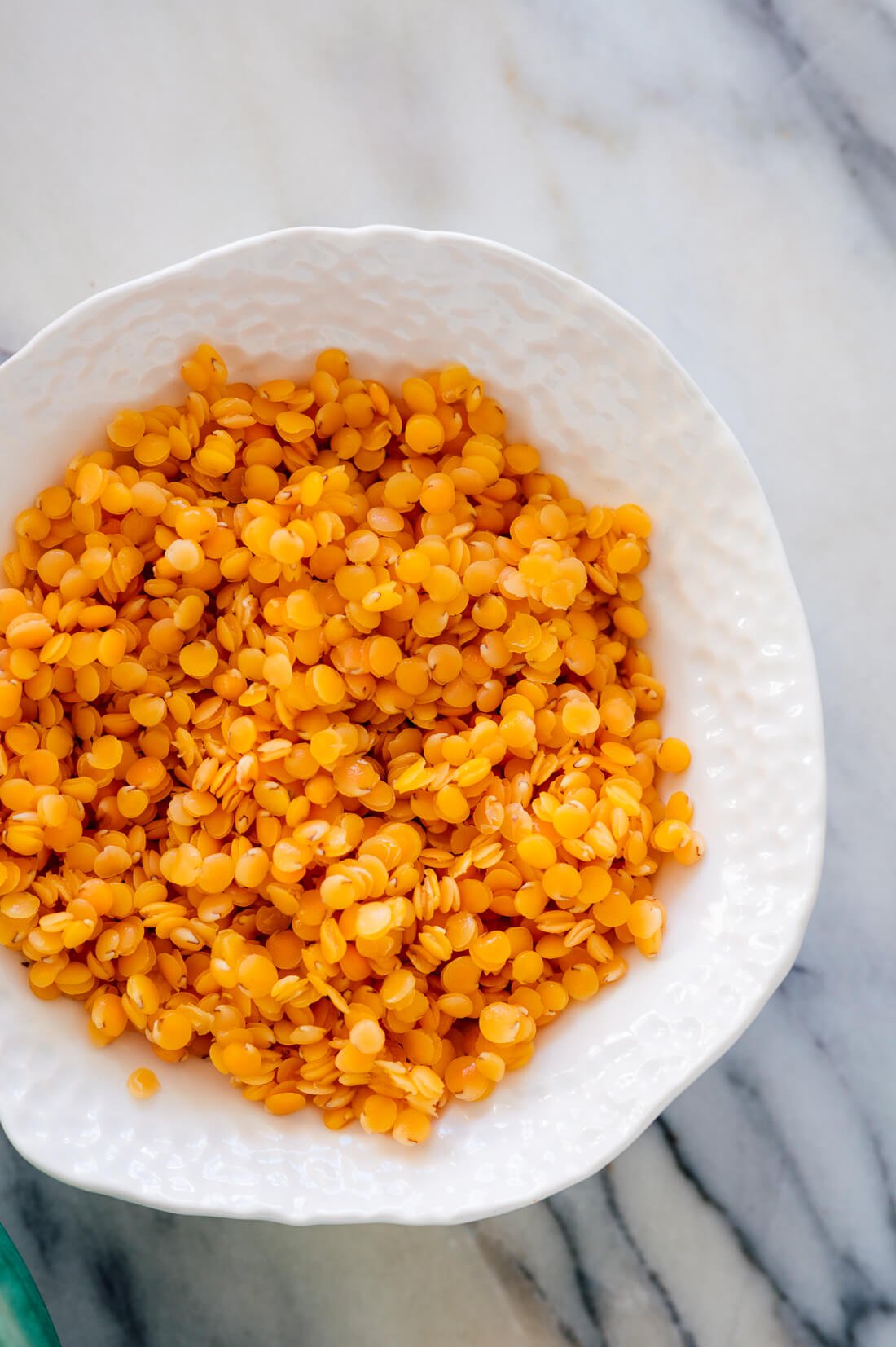

 Vegetable enthusiast. Dog lover. I'm probably making a big mess in my Kansas City kitchen right now.
Vegetable enthusiast. Dog lover. I'm probably making a big mess in my Kansas City kitchen right now. 

4waystoyummy
A nice rundown on lentils. For the first time, I made a vegetarian lentil mushroom chili for some friends. I love lentils! Thank you!
★★★★★
Kate
You’re welcome! Thank you for your comment and review.
Lindsey
I’m a new subscriber to your email and like it a lot. Your variety of recipes matches my taste (I’m not a vegetarian but may get there in another year or two.) Their complexity level also suits my intermediate life-learned kitch skills. The receipes are interesting enough to be fun (I like cooking) but not overwhelming in technique or ingredients. Nice job!
Kate
Thank you, Lindsey! Welcome. I hope you enjoy the recipes you try!
Kelly P
Thank you! I just found some red lentils in my pantry and thought “Oh dear…what do I do with these?” Now I can cook them up and add them to just about anything.
★★★★★
Kate
Hooray!
Elana
Such a great article! One suggestion, even though one doesn’t have to soak lentils, doing so for 20 min and straining off the water before cooking can significantly help people with lentil sensitivities like me digest them. It’s like night and day. Love all the lentils you cover!!
★★★★★
Kate
Thank you for sharing, Elana!
Patsy
Please tell me how long you can store cooked lentils, and recipes including them, in the fridge..
I love your newsletter, pictures, recipes and discussions. And I enjoy making them. Thank you!
★★★★
Rebecca B.
Love this post! We’re just recently getting into lentils and this information is very helpful. We L O V E your lentil spaghetti recipe!
Kate
Thank you, Rebecca! I hope it works perfect for you.
Karen
This is helpful. Any suggestions for cooking them in the InstantPot? They have been too hard or too mushy each time I’ve tried. Thanks
Kate
Hi Karen! I just did stovetop, sorry!
Lisa Cotton
I haven’t used your recipe yet, but wanted to THANK YOU for this post. I’ve been trying to incorporate lentils into my diet (attempting to get more plant-based protein) and this is absolutely PERFECT!
★★★★★
Kate
You’re welcome, Lisa! I’m happy to hear you are excited. Let me know how it works for you.
Shane Grandstaff
WOW hopefully im not the only one who tried this recipe , I have been trying to go vegan. I picked up this book to help, maybe it can help others to. h
★★★★★
Kate
Thank you for sharing, Shane!
Alexis
Thank you for showing all the wonderful different varieties of lentils. I’m curious though, I use this exact same method for awhile now but my green lentil always take 30-45 minutes to cook. Is it the type I buy I wonder? My red lentils take around 20 minutes. Same method. I live in Canada and buy from my local grocery store in the bulk bins. Thanks again.
Kate
Hi Alexis, great question! I’m wondering if it’s your specific variety and age. Do you bring it to a boil first?
Alexis
Yes I use this exact method. I would assume it’s the age and variety, although I’ve purchased packaged lentils as well and they also take awhile to cook. I’ve always been curious because other methods of cooking use less cooking time and my lentils have never been ready in a shorter rime. Not that it’s an issue just something I’ve always wondered.
Paige Cassandra Flamm
I’ve really been wanting to cook more with lentils this year, so this post is perfect timing! I’m totally bookmarking this for when I finally get brave and pull the trigger!
Paige
★★★★★
Kate
Be sure to let me know what you think!
Liz
I heard that adding salt after instead of at the beginning can prevent the lentils from splitting in the pot. Any thoughts on adding salt before v after?
Kate
Hi Liz! That’s an interesting idea. I’ve never noticed a difference in how the lentils cook, but I haven’t specifically looked at whether they’re split or not.
Mary
I love lentis. Such a delicious recipe
★★★★★
Kate
Thank you, Mary!
thomaisna clarke
you didn’t say how long to cook brown lentils.
S
I try not to pick favorites when it comes to food blogs (I like to keep my options open, ya know?) but I honestly can’t hold that opinion any longer when it comes to your blog. I was looking up explanations on lentils from SO many places but yours is objectively the most helpful and clear! Thank you from a vegetarian of 8 years + former KC resident.
★★★★★
Kate
I love to hear that! Thank you for sharing and for your review.
Immac
Hi Kate, tried cooking the brown lentils, they are delicious. Your recipe was easy and simple to follow. I have been here before and now I have bookmarked your page.
Thank you.
Lauren
I had never made lentils before but followed your recipe exactly for the green lentils last night. They turned out how I imagine they should taste, never having had them before. I’m limiting meat and struggling to get enough protein without it so this was really helpful. Thanks for the post!
★★★★★
Kate
I’m glad they turned out perfect for you, Lauren. I appreciate your review!
CeeCee
Just finished cooking and eating some green lentils for lunch. Perfect recipe! The bay leaf and smashed garlic at the end gave it great flavor.
Just wanted to let you know that CookieandKate is my favorite healthy food blog. April 2019 was when I started my “fitness journey” and that included changing my nutrition and making healthy recipes. I’ve eaten more vegetables, grains, legumes, pseudograins in the past year than I did in my entire life combined and I’m approaching 30! Thank you SO MUCH for creating these easy, and most importantly, affordable recipes. You take simple ingredients and make magic with them. I’ve loved every recipe I’ve tried!
★★★★★
Ron B
I cooked the lentils per the recipe and sautéed garlic, and onion (a lot) with cumin, Chili powder, and paprika. After I drained the lentils, I added the spices, onion and garlic. It turned out great.
AquaLady
Good post, but I can’t believe you drain the lentils!!! The juice is the best part.
★★★
Kate
Thank you for your feedback! I find is is more versatile to using in other recipes.
Lucia
This is exactly the way my mom, ( who was Italian), always cooked lentils when I was growing up and this is how I’ve always made them. By far mine and now my husband’s favourite way to eat lentils. So easy, delicious & nutritious.
So thanks for trip down memory lane!
Have tried other recipes of yours & they’re always delicious. Love your site. Thanks!!
★★★★★
Kate
That’s fun! Great minds thinks alike, Lucia. Thank you for sharing!